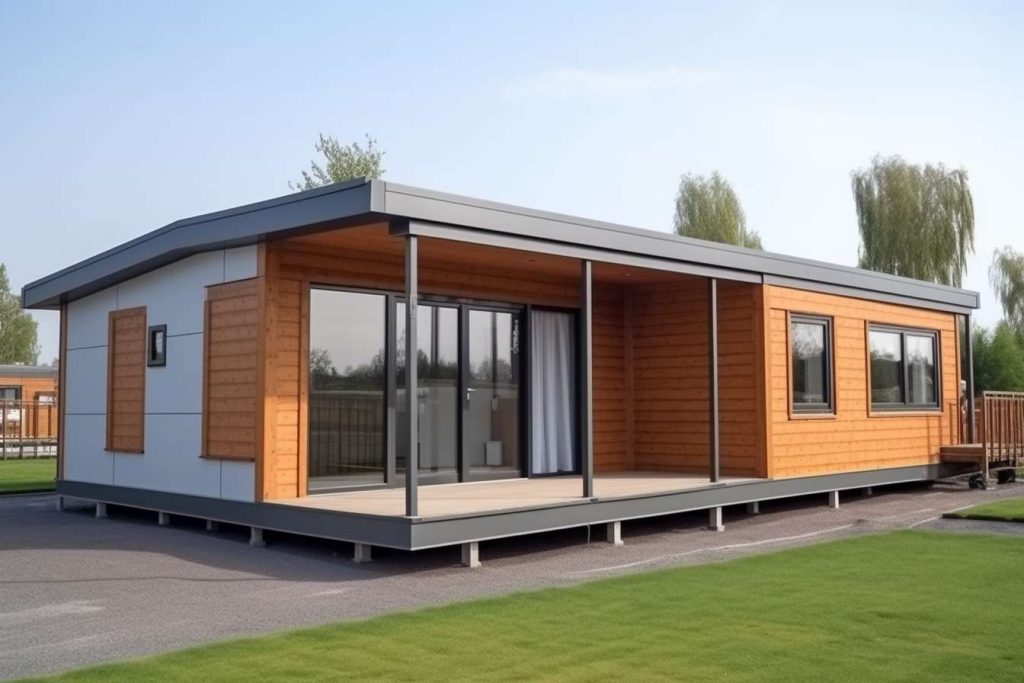
Your Guide to Ready-Made and Prefab Homes

Understanding Ready-Made and Prefab Homes
Ready-made homes, often referred to as turnkey houses, are fully constructed properties available for immediate occupancy. These homes are designed and built by manufacturers, allowing buyers to bypass the lengthy traditional construction process. Prefabricated homes, or prefab homes, are similarly manufactured off-site in sections or modules and then transported to the desired location for assembly. Both options provide flexibility in design and can be customized to meet specific preferences and requirements.
One of the primary advantages of choosing a ready-made or prefab home is the reduction in construction time. Traditional builds can take several months to over a year, depending on complexity and weather conditions. In contrast, prefab homes can be completed in a fraction of that time, often within a few months from order to move-in. Additionally, these homes typically adhere to strict quality control standards during the manufacturing process, ensuring consistency and durability.
Cost Considerations and Pricing Structures
When evaluating ready-made and prefab homes, understanding the pricing structure is crucial. Prices can vary based on size, materials, customization options, and location. Generally, prefab homes tend to be more cost-effective than traditional builds due to the efficiencies of off-site construction and bulk material purchasing. For example, a standard turnkey home might range from AUD 150,000 to AUD 300,000, depending on specifications and finishes.
For seniors seeking affordable housing solutions, there are specialized prefab options designed with their needs in mind. These homes often include features such as single-level layouts, wider doorways for wheelchair access, and low-maintenance materials. Pricing for senior-friendly prefab homes can be competitive, with some models available for under AUD 200,000. Additionally, financing options and government incentives may be available to support seniors in their home purchase, making these homes an attractive option for those looking to downsize or simplify their living arrangements.
Customization and Design Flexibility
Customization is a key benefit of both ready-made and prefab homes. Buyers can choose from a variety of layouts, materials, and finishes to create a home that reflects their personal style and meets their functional needs. Many manufacturers offer a range of design templates that can be tailored to include additional bedrooms, expanded living spaces, or energy-efficient features.
Moreover, modern prefab homes incorporate innovative design elements that maximize space and enhance livability. Open-plan living areas, large windows for natural light, and sustainable materials are common features that appeal to contemporary homeowners. For seniors, design flexibility allows for modifications that improve accessibility and comfort, such as step-free entrances, accessible bathrooms, and integrated smart home technologies for added convenience and safety.
Sustainability and Energy Efficiency
Sustainability is increasingly important in the construction of new homes, and ready-made and prefab options excel in this area. These homes are often built using eco-friendly materials and practices that reduce environmental impact. Energy-efficient designs, including superior insulation, solar panel integration, and energy-saving appliances, contribute to lower utility costs and a smaller carbon footprint.
Prefab homes, in particular, benefit from precise manufacturing processes that minimize waste and ensure optimal energy performance. Many manufacturers prioritize green building standards, offering certifications such as Passive House or Green Star. For environmentally conscious buyers, these homes provide a sustainable living solution without compromising on quality or comfort. Additionally, the streamlined construction process of prefab homes reduces construction waste and site disturbance, further enhancing their eco-friendly credentials.
The Buying Process and What to Expect
Purchasing a ready-made or prefab home involves several key steps, from selecting a design to final installation. Initially, buyers should research reputable manufacturers and explore their available models and customization options. It’s important to review the company’s portfolio, customer testimonials, and any relevant certifications to ensure reliability and quality.
Once a design is selected, the next step typically involves customizing the home to meet specific needs and preferences. This may include selecting finishes, layout modifications, and incorporating any special features such as accessibility enhancements for seniors. After finalizing the design, the manufacturer will handle the construction process, often providing a timeline for delivery and installation.
During installation, it’s essential to work closely with the manufacturer and any local contractors to ensure that the home is properly placed and connected to utilities. Many manufacturers offer comprehensive support services, including site preparation, foundation work, and post-installation inspections, to ensure a smooth transition to your new home. By understanding the process and maintaining clear communication with all parties involved, buyers can achieve a seamless and satisfying home purchasing experience.
Conclusion
Ready-made and prefab homes present a viable and attractive option for Australian homebuyers seeking efficiency, customization, and sustainability. With competitive pricing, especially for senior-friendly models, and the benefits of reduced construction time and enhanced quality control, these homes cater to a wide range of needs and preferences. By exploring the various options and understanding the purchasing process, buyers can confidently embark on their journey to turnkey living, enjoying the comfort and convenience of a home designed to suit their lifestyle.
Your Guide to Ready-Made and Prefab Homes
©2024 All rights reserved
